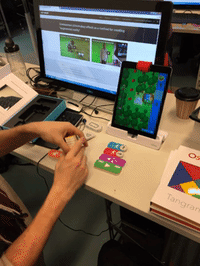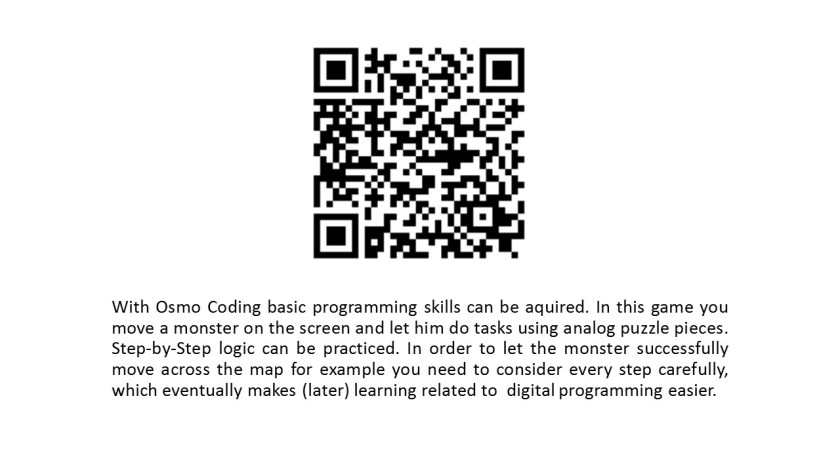Today I explored the possibilities of Osmo. There are many different games you can play using an Ipad, the Osmo app, as well as the different analog game pieces.
With Osmo Tangram you have to replicate shapes from the screen with different geometrical forms that you have to put together in a right way, kind of like a puzzle. I think this could be really beneficial for math and logical thinking skills.
Osmo Words can be used for languages. Depending on the language used it can be used to teach vocabulary and especially spelling. It is also a really fun game to play with other students: Who can spell faster?
In Osmo Numbers you can count using dots or numbers. Adding and subtracting can be practiced with this game. In order to win the game you need to add and subtract numbers as fast as you can.
There is also Osmo Coding in which basic programming skills can be learned. In this game you move a monster on the screen and let him do tasks using analog puzzle pieces. Step-by-step logic can be practiced. In order to let the monster successfully move across the map for example you need to consider every step carefully, which makes learning digital programming more easy.

Also I found out a lot about using QR-Codes in the Classroom. QR-Codes are basically like bar codes – they contain certain information, such as images, videos, sounds or URLs. They can be a useful tool for teachers. You can for example create a scavenger hunt for your students. In order to so you need to put out different pages with QR-Codes and maybe a short description of what to find there or some context. If the subject of the class is “Dinosaurs” for example, the different pages could include the names of certain dinosaurs and then a QR-Code that leads to an image or video of that specific dinosaur. Each student or each group needs a mobile device, such as an Ipad, and they are ready to go explore on their own. It is also possible to combine augmented reality using QR-Codes as the dinosaur-example in the above Featured Image exemplifies.

Aurasma basically works like an extended QR-Code. Instead of the two-dimensional code you use images. These images, which are open source and able to be created by everyone, who owns the app, lead to digital content, which is put over the image. For example, if you have an image of a dinosaur and you use Aurasma with it, it could lead to an animated dinosaur walking around and making sounds.
